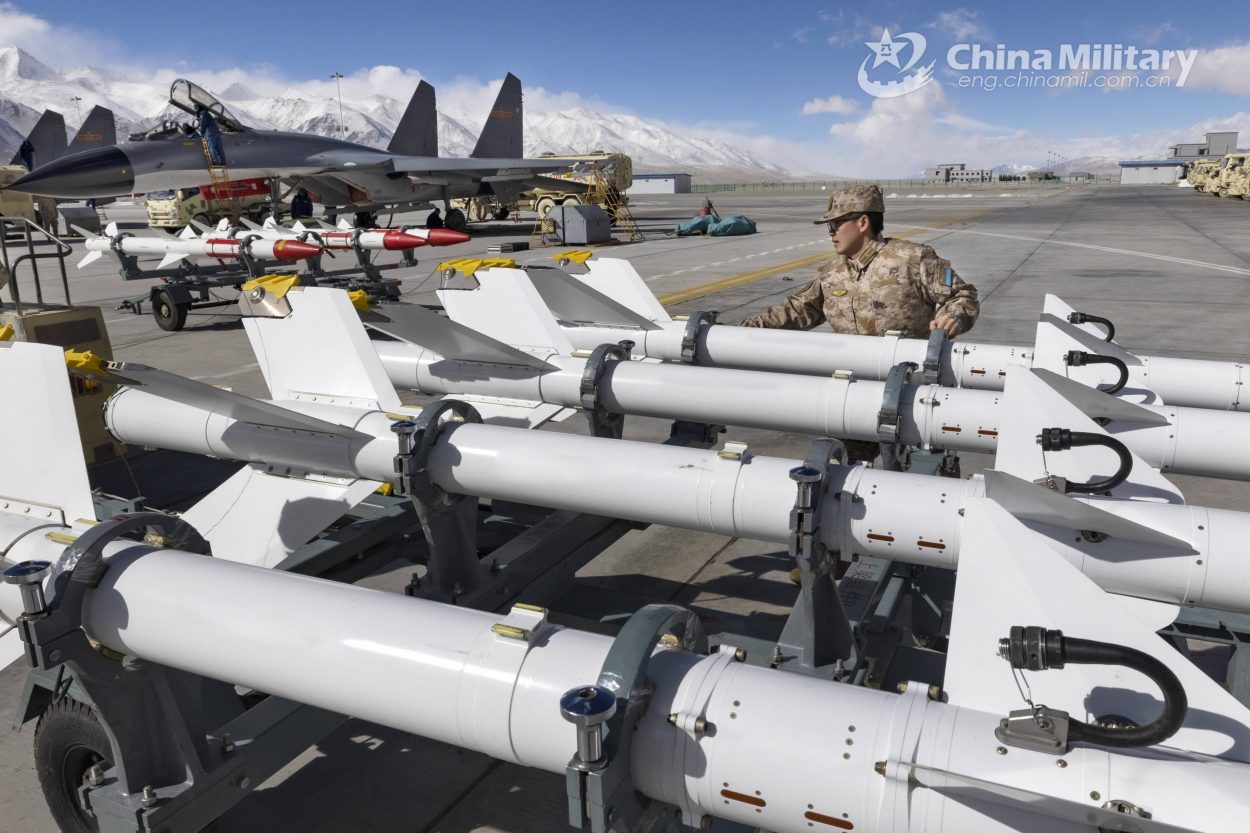China is speeding up the development of more than 100 missile silos capable of delivering nuclear warheads to any part of the world, especially the US. This move by Chinese leadership is intended to discourage the American military from engaging in a future Taiwan confrontation, the Wall Street Journal reported.
Sidelining Airbus For Boeing, Indian Air Force Finally On Track To Acquire Mid Air Refuelers To Power Its Fighter Jets
China’s nuclear arsenal, according to the US government and private sector firms, is somewhere in the ‘hundreds’, significantly less than the US and Russian nuclear arsenals of around 4,000 warheads. However, China is expected to have 1,000 warheads by the end of this decade, the report said.
China is accelerating its nuclear weapons buildup because of growing fears of a conflict with the U.S., people with knowledge of the situation say https://t.co/Py9H62XnKj
— The Wall Street Journal (@WSJ) April 9, 2022
The revelation comes after the Pentagon stated last year that China’s Communist Party intends to “modernize, diversify, and expand” its nuclear arsenal.
Chinese military leaders believe that their nuclear weapons are too ‘outdated’ to be an ‘effective deterrent’ against an American assault, as per the new report. A source familiar with the plans told the newspaper that China’s inadequate nuclear capabilities could only result in more US pressure on the country.
Temporary Covers Of Missile Silos
Based on satellite photographs taken in January, American intelligence experts estimate the most sensitive work on the Chinese silos has been finished.
Satellite images show that the last 45 of the temporary covers placed over suspected missile silos near Yumen, a rural area in China’s northern Gansu province, have been removed, indicating that the most sensitive work at all of the silos has been completed.

Meanwhile, two smaller silo fields in western China seem to be in the early phases of development, according to Matt Korda, a senior research associate with the Nuclear Information Project at the Federation of American Scientists in Washington.
The silos at each of the sites are purportedly capable of hosting the DF-41, a new long-range missile capable of reaching the US mainland. The missile enters service in 2020.
Shelters aren’t a new thing in Chinese missile construction. According to declassified reports from the US National Photographic Interpretation Center, China employed a combination of “large rectangular covers,” “camouflage nets,” and other forms of shelters to conceal its silos from the elements and spy satellites above in the 1970s and 1980s.
The reported silo construction project could provide China with yet another way to hide its most deadly weapons. Last year, the Washington Post reported that the construction sites are spread across two large expanses of the desert basin to the west and southwest of Yumen, a 170,000-person city on China’s ancient Silk Road.
Development of Advanced Military Equipment
Defense Experts believe that China is focusing more on its capabilities to respond to nuclear assaults. Beijing is developing an early-warning system that can intercept incoming missiles with the help of Russia.
The country also launched a satellite in February 2021 that is said to be the first blueprint for a space-based missile detection system. Furthermore, China is claimed to be developing sophisticated weaponry capable of carrying nuclear bombs, such as hypersonic missiles, against which analysts claim the US has “proven defenses.”
These advancements and sophisticated weapons could also provide China with a higher chance of retaliating if it is hit first in a nuclear attack.
“All of these capabilities work together to say to the U.S.: ‘There is no world in which you can engage in a nuclear first strike against China and not expect nuclear retaliation back on your cities, even with your missile defenses, even with your great counterforce capabilities,” Caitlin Talmadge, an associate professor of security studies at Georgetown University, told the Journal.
US Factor Behind China’s Move
Chinese leaders are concerned that the US may attempt to destabilize the country’s Communist rule, highlighting the Trump and Biden administrations’ more aggressive approaches against China, the journal noted.
Additionally, China’s nuclear ambitions are still being downplayed in the public eye, despite the latest attempt to speed up the development process.
“On the assertions made by U.S. officials that China is expanding dramatically its nuclear capabilities, first, let me say that this is untrue,” Fu Cong, director-general of the Foreign Ministry’s arms control department, told the nation earlier this year.
Instead, he contended that the country just wanted the bare minimum of nuclear deterrents to assure national security and defense. China is aiming to ensure that its nuclear deterrence matches the minimal level required for national defense, according to him. The US, on the other hand, has consistently called for talks with Beijing on arms control.
The US State Department had previously stated that the Biden administration had attempted to engage China on arms control, stating that it was “ready and willing” to do so and that it had informed Chinese officials of its intentions.
This is the second time in two months the public has discovered what we have been saying all along about the growing threat the world faces and the veil of secrecy that surrounds it.https://t.co/OTFkP14H5o
— United States Strategic Command (@US_STRATCOM) July 27, 2021
The US President Biden wants to “carry forward discussions on strategic stability” with Chinese President Xi Jinping, according to US National Security Adviser Jake Sullivan.
The main point of contention between the two countries is Taiwan, which China considers to be part of its territory. In recent years, the United States has upped its weapons supplies to the island nation. These advancements have been viewed as a threat by Beijing which calls it ‘gross interference by Washington in China’s internal affairs.
- Contact the author at ashishmichel@gmail.com
- Follow EurAsian Times on Google News